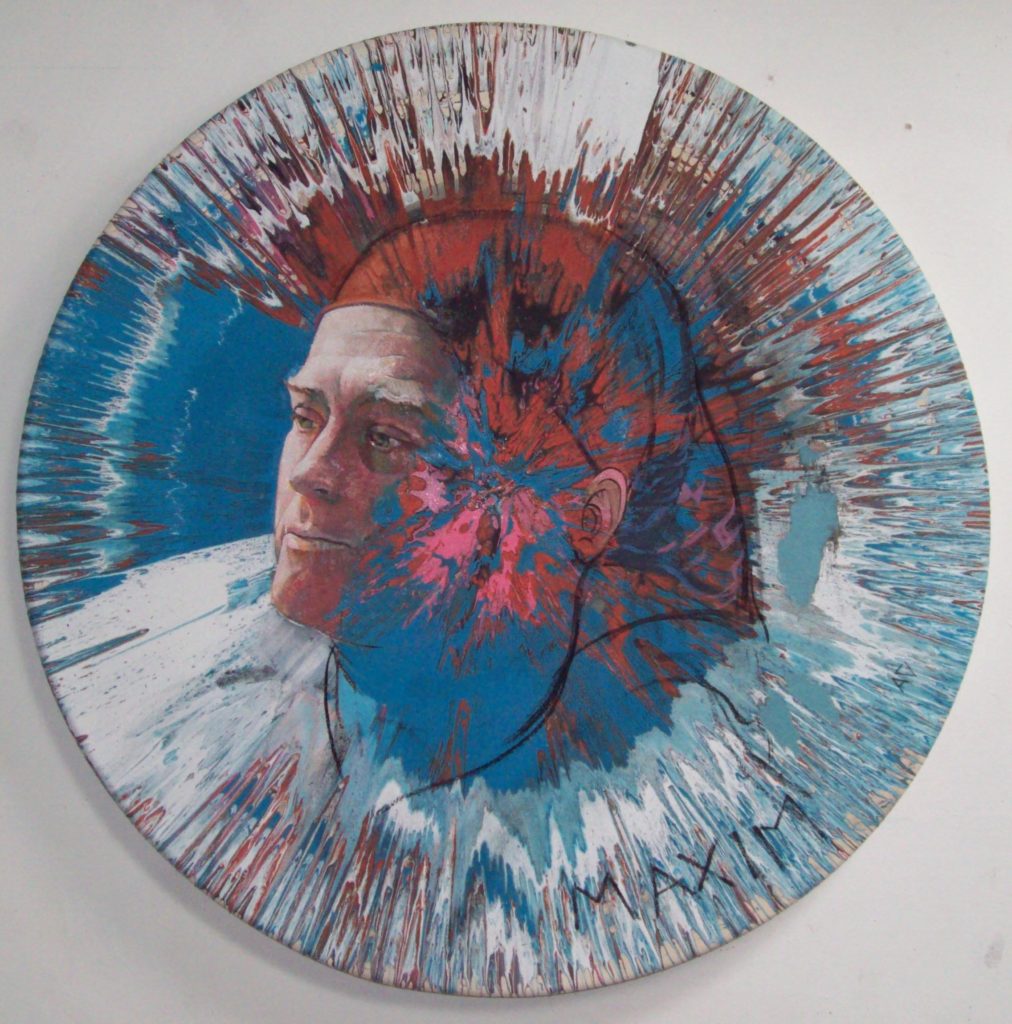My spin paintings are so much better than Damien Hirst’s because:
1) Mr. Hirst gets paid too much for his, I get slightly less – indicating (in the great capitalist scheme of things), my exploration of automated action painting is still ‘in process‘ still ‘becoming‘; in a creative sense it has more to offer both myself and the good people who recognise it’s merits (my customers).
2) due to my provenance ie. NOT part of the Goldsmiths/Saatchi conveyor belt of MABA, (Middle Aged British Artists) – I am able to fuse the British tradition in painting with post-modern ennui; successfully elevating the whole gamut of creative endeavour to new heights.
3) the rich ground from which my practise springs, furnishes my output with an earthy pragmatism characteristic of the indigenous folk of these islands. A show of British Art at the Royal Academy in the wake of it’s ‘German Art of the 20th Century’ made this clear to me.
4) like an over-washed pair of Calvin Klein underpants, the ‘Hirst brand’ will fade and lose it’s sex appeal. It lacks true genius born of suffering and whilst no-one should begrudge an ‘artist’ their success, we must acknowledge the damage inflicted on the wider community (of arts practitioners) by celebrity culture (see 9 below).
5) Mr. Hirst’s spin paintings show little appetite for invention, innovation or experiment. ‘He’ appears to put a canvas on a centrifuge and chuck paint at it. There is little apparent effort (on his behalf) to formulate meaning in painterly marks/gesture – like De Kooning for example. No attempt has been made to mix figurative elements into the maelstrom of a spin painting, grappling with hand made marks in relation to automated marks – though Jonathan Jones of the Guardian maintains Hirst would have difficulty doing so anyway.
6) without an academic background in painting, Mr. Hirst is bereft of language with which to extemporise. To what extent has he applied traditional painting techniques if at all? To date I have experimented with underpainting, varnishes, glazes and looked closely at the behaviour of ‘non-compatible’ mediums, I have drawn from life into spin paintings; I work with a range of hues in part based on the extended oils palette I prefer.
7) Hirst’s success (and money) mean he is removed from the kitchen sink realism of daily artistic struggle – so his output is compromised, lacking the true grit of experience. I have built (with help) four centrifuge contraptions and understand the engineering principles behind them. Damien Hirst is too much of a smooth operator to battle with one of these bursting into flames whilst ‘creating’ – it would mess up his suit and bowler hat.
8) The meaninglessness of Hirst’s meaningful meaninglessness is in fact – meaningless.
9) The secret to Damien Hirst’s apparent success is the fact he isn’t an artist at all (and has little or no right to call himself one) – he is a salesman. Selling something another person has produced is far easier than something self-made, because there is no emotional tie or commitment to the product. That is why Mr. Hirst has no problem retailing ‘his artworks’ – which are (allegedly) produced by other people ie. his assistant Rachel Howard. It is usual for successful artists to have endured the pain of marketing works they have personally made. Hirst doesn’t appear to have done much of this.
10) Because of the foregoing, we can assume value in works bearing the Hirst moniker will be subject to change. The cynicism inherent in the post-modern MABA trade is corrosive. It damages the human aspect of caring and esteeming – in which critics, the media, auction houses, galleries, the public and collectors participate.
Jonathan Jones (of the Guardian) writes: ‘Faking a fortune: why Damien Hirst’s paintings are poor imitations of Art’ – so I’m not the only one to question the matter.



Leave a Reply